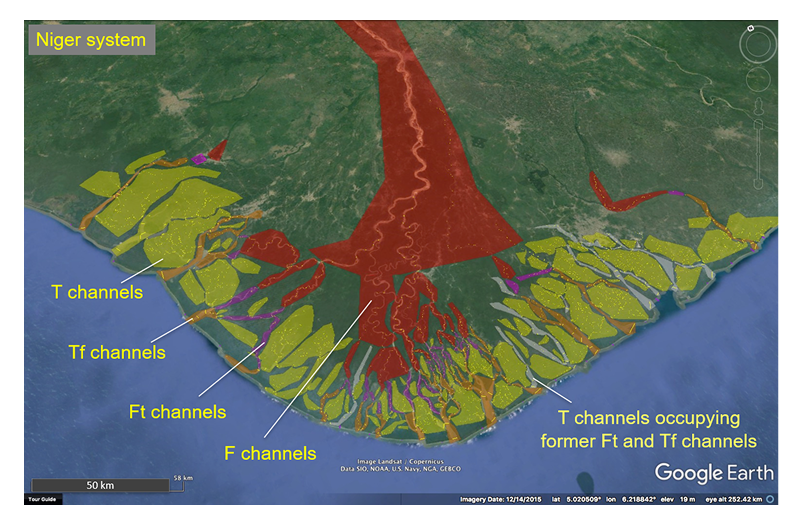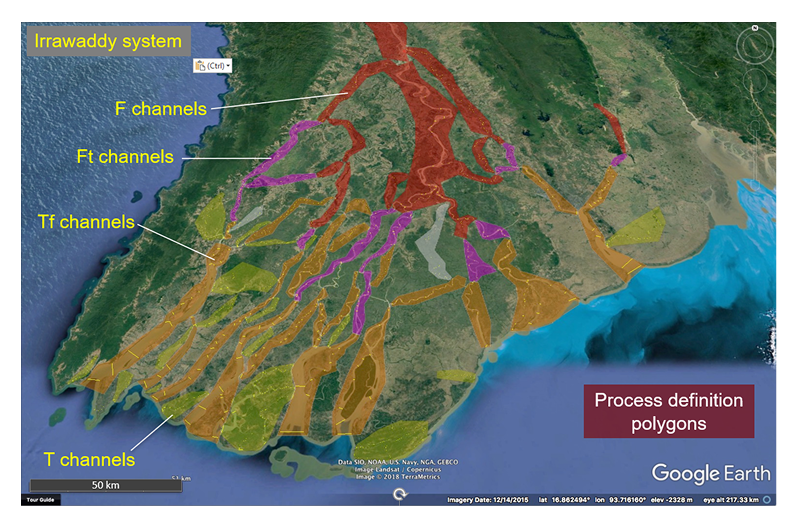Modern channels dataset
Sedbase's channel parameter database is arguably the largest of its kind. It is based on a substantial number of river systems with a global distribution.
While a majority of the systems included are associated with delta plains and estuaries, large portions of the data are entirely alluvial.
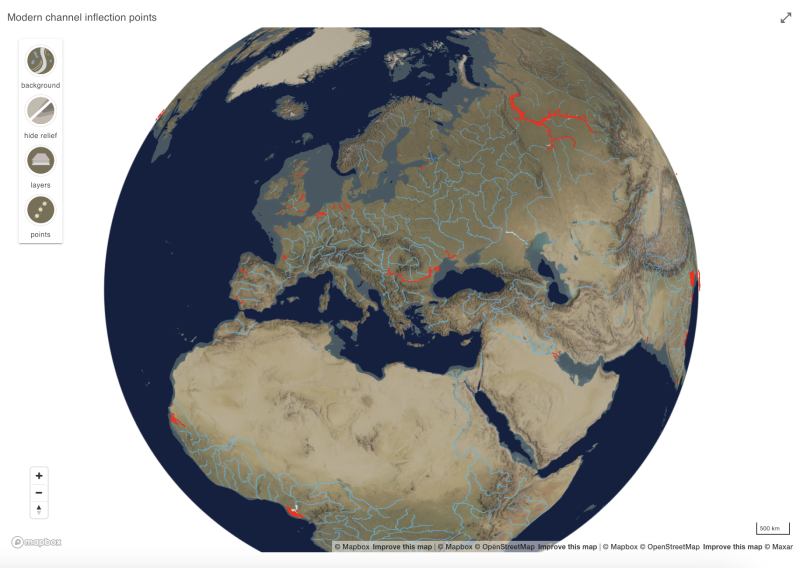
The primary objective of the dataset is to capture data on channel shapes, sizes and, where available, depths from various settings. It aims to relate this data to numerous additional variables such as distance from the coastline, elevation above sea level, and tidal range at the coastline, among others.
Many of the channel parameters can also be connected with metadata at the systems and channel belt levels by linking different tables through a shared system name.
The red channel inflection points below, from the Niger Delta system, are all associated with channel width and shape measurements. This data enables you to study how channel width and shapes change with increased distance from the coastline.
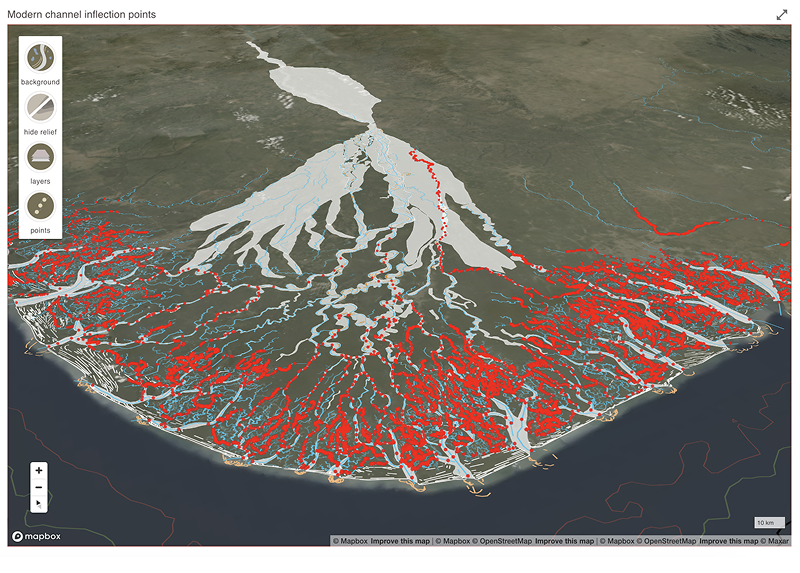
Overview of measurement methodology
Manual data collection and measurements:
Much of the data in this multi-year collection effort involved manual descriptions of channels, identification of inflection points, and tabulation of various measurements.
The image below is from the Amazon system and illustrates how width has been defined for every channel inflection point in Google Earth. An inflection point is defined as a location where the direction of curvature of a channel changes (from left to right or from right to left). Please note that many systems have been described regionally.

Parameters measured
Once inflection points are defined for a particular channel (see red points shown at different scales from the Frontera system below), we use adjacent pairs of these to measure the following: width of the channel (W) at the first inflection point, direct distance between the two inflection points (Ld), along-channel distance between the two inflection points (Lc), and the offset between the Ld and Lc lines, which we refer to as amplitude (A).
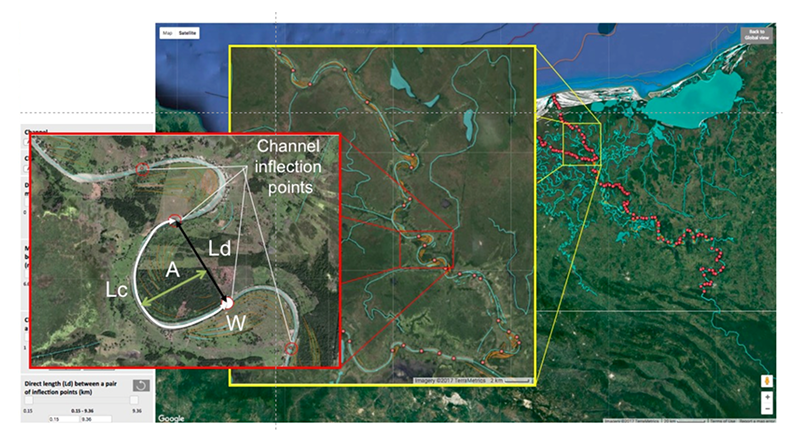
Each inflection point is also associated with known geographical coordinates.
After we've collected these four measurements, we calculate a few additional parameters: The ratio between the Lc and Ld measurements (Lc/Ld) can be thought of as the local sinuosity of the channel, serving as a measure of how much the channel deviates from a straight line.
Maximum depth of channel stretch (m):
Many of the channel stretch measurements include a maximum depth value. These measurements were obtained through manual review of available channel data in Navionics. Such data is limited to channels that are navigable by boat (i.e., there is a bias towards deeper rivers).
Automated measurements:
We also use scripts that provide useful additional statistics. One script identifies nine consecutive inflection point measurements belonging to the same parent channel, which allows us to calculate the average sinuosity based on several adjacent stretches.
Another measurement we obtain for every point is the elevation above sea level.
We also calculate the direct distance from each inflection point to the channel mouth at the coastline. These relationships are worked out by the channel naming scheme that we employ during data collection, which is described in the following section.
Channel naming scheme
An important aspect of the channel datasets is that all data points are associated with a named hierarchical channel scheme. Such schemes have been defined for all analyzed systems. Positioning channels and their inflection points within a hierarchical framework allows us to link a data point to its specific position in the fluvial channel network.
We have named channels, channel stretches, and channel inflection points.
The naming scheme used indicates whether a channel has been followed from a starting point to the coastline. The scheme also clearly distinguishes distributary from tributary channels.
In the example below, we can use an assigned name to differentiate between a channel (e.g., A_Xa) and a channel stretch, which is a designated part of a channel (e.g., A_a1 or a1_Xa).
Note that all channel mouths at the shoreline, which belong to the same system, are marked with consecutive capital letters.
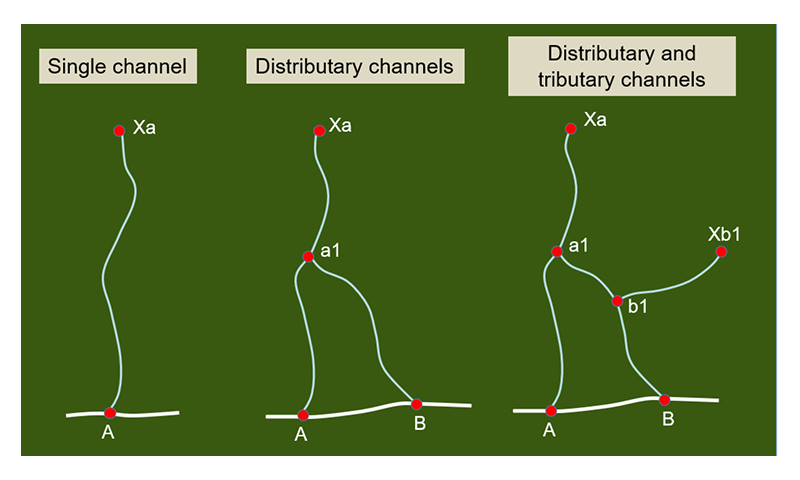
Individual inflection points are then assigned names based on the part of a channel or a channel stretch they belong to (e.g., (A_Xa)_1, (A_Xa)_2, (A_Xa)_3). Therefore, the name of every inflection point in the database identifies its position within the system's drainage network. Each inflection point in the database has been named following this methodology.
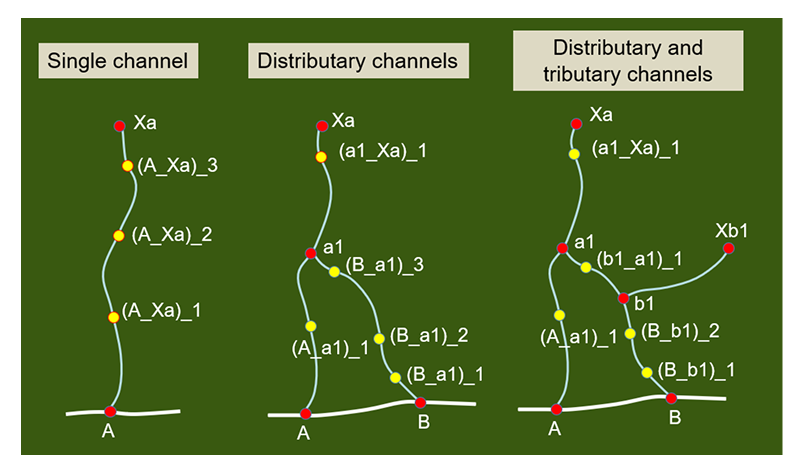
The example below demonstrates how channel stretches have been named in the Niger system. The naming of channel points in systems with numerous channels (tidal or otherwise) can become very complex, yet it is nonetheless available for analysis.
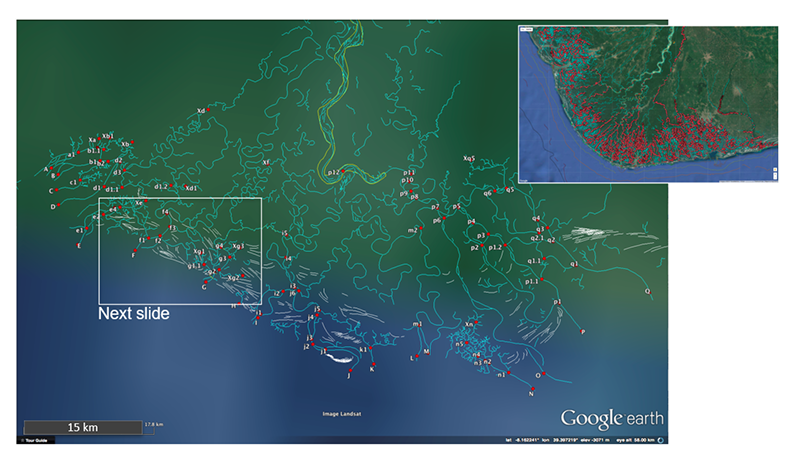
Subordinate channels
Part of the channel dataset includes measurement of subordinate channels which are common in large anastomosing rivers.
The image below shows subordinate channels in pink. Only channels that have been active for at least 30 years have been included.
IMPORTANT: Subordate channels are treated in the same way as main channels in the provided data tables apart from a 'Yes' entry in one of the data columns. It is important for you to filter out this data if you are only interested in analyzing main channel types.

Channels classified by process:
The channel inflection points in several systems have been classified in terms of process (F, Ft, Tf, T). This allows analyzing how non-tide influenced channels can be compared to channels with varying tidal influence in the same system.
